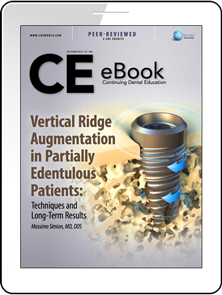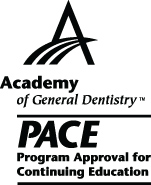CDEWorld > eBooks > Vertical Ridge Augmentation in Partially Edentulous Patients: Techniques and Long-Term Results


ADA CERP is a service of the American Dental Association to assist dental professionals in identifying quality providers of continuing dental education. ADA CERP does not approve or endorse individual courses or instructors, nor does it imply acceptance of credit house by boards of dentistry. Concerns or complaints about a CE provider may be directed to the provider or to ADA CERP at www.ada.org/cerp/

Approved PACE Program Provider. FAGD/MAGD credit. Approval does not imply acceptance by a state or provincial board of dentistry, or AGD endorsement. 1/1/2023 to 12/31/2028. ID # 209722.
eBook
Released: Wednesday, December 28, 2016
Expires: Tuesday, December 31, 2019
Vertical Ridge Augmentation in Partially Edentulous Patients: Techniques and Long-Term Results
By Massimo Simion, MD, DDS
Commercial Supporter: OsteoHealth
After years of research, development, and evolution, vertical ridge augmentation techniques using guided bone regeneration with membranes and grafts for implant placement are now simpler than in the past and less invasive for patients, and different approaches can be used depending on the severity of the case. This article reviews the significant periods in the development of vertical ridge augmentation techniques, as well as key research findings demonstrating the efficacy of this approach for augmenting and regenerating bone at implant sites.
LEARNING OBJECTIVES:
-
Identify the key periods in and discuss significant findings from the research and development of vertical ridge augmentation techniques using guided bone regeneration with membranes.
-
Describe the materials incorporated into vertical ridge augmentation techniques to help simplify the procedures.
-
Explain the differences between and the protocols involved with the simultaneous approach and the staged approach to vertical ridge augmentation.
About the Author
Massimo Simion, MD, DDS
Professor, Department of Periodontology, University of Milan School of Dentistry, Milan, Italy


